41 clam dissection diagram
dissections DISSECTION DIAGRAMS Use these slide shows to help students diagram the parts they saw to use as study guides for practical quizzes. Slide shows have lots of images. ... Clam dissection slide show by Kelly Riedell: South Dakota Public Broadcasting Clam video Lesson Plan with support materials Clam Moving video ... PDF Lab 5: Phylum Mollusca - Amherst the living clam to the diagram in Figure 2B, to understand the path of water movement through the mantle cavity, across the surface of the gills and out through the (upper) excurrent siphon. 7. Carefully trim off the mantle where it attaches dorsally to the gills. First note the structure of the gills.
PDF Biology 11 Name: Clam Dissection 1 anterior posterior 2. Clam Dissection Purpose: To examine the internal structure of a bivalve Procedure: 1. Observe the external anatomy of the clam, identify the anterior and posterior ends of the clam as well as the dorsal, ventral, & lateral surfaces. 2. Locate the umbo, the bump at the anterior end of the valve. This is the oldest part of the clam shell.
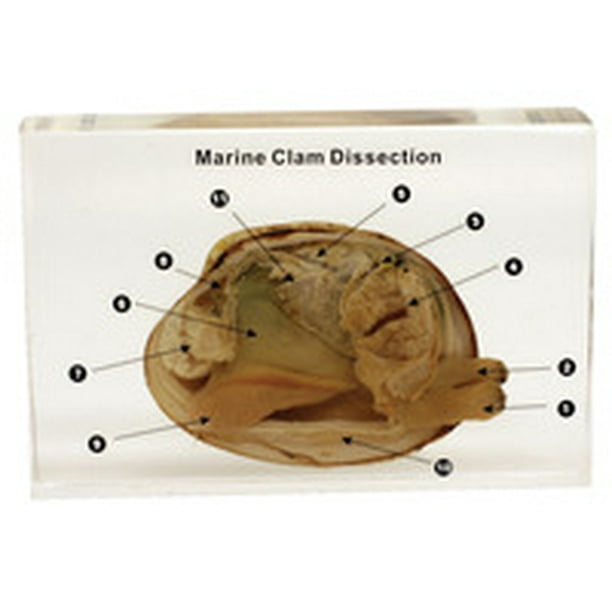
Clam dissection diagram
PDF Taxonomy, Anatomy, and Biology of the Hard Clam Internal Clam 1. Inner surface of left valve 2 Pt dd t l Shell Anatomy. Post. adductor muscle 3. Ant. adductor muscle •Hold valves shut 4. Hinges •Ligament holds valves together •Interlocking teeth prevent valves from side slipping when opening and closing 5. DOCX Clam Dissection - Aquatic Science - Home Clam Dissection . Handouts. Introduction. The phylum Mollusca includes snails, clams, chitons, slugs, limpets, octopi, and squid. As mollusks develop from a fertilized egg to an adult, most pass through a larval stage called the trocophore. The trocophore is a ciliated, free-swimming stage. Mollusks also have a radula or file-like organ for ... PDF Clam Dissection Answers - HPD Collaborative clam dissection lab answers is available in our book collection an online access to it is set as public ... following diagrams of the clam. C. Use arrows on the clam diagram to trace the pathway of food as it travels to the clam's stomach. Continue the arrows showing wastes leaving through the anus.
Clam dissection diagram. Clam Diagram Labeled - schematron.org Also, use arrows on the clam diagram to trace . Labeled parts of a clam further mussel anatomy lesson along with clam dissection further labeled flatworm diagram as well as collectionsdwn squid internal anatomy moreover octopus internal diagram moreover clam anatomy 2 along with diagram parts of a potato along with mollusk notes b1 also ... Clam Dissection - js082.k12.sd.us Printable version: Clam Dissection Introduction The phylum Mollusca includes snails, clams, chitons, slugs, limpets, octopi, and squid. As mollusks develop from a fertilized egg to an adult, most pass through a larval stage called the trocophore.The trocophore is a ciliated, free-swimming stage. Clam Dissection Teaching Resources | Teachers Pay Teachers This clam dissection packet includes diagrams, instructions, and questions to guide students in their dissection. It is designed to be completed in a 50 minute class period, with time recommendations for each step of the dissection. PDF Clam Anatomy Exercise Clam Anatomy Exercise . Objective: Students will observe the inside and outside of a clam. Record on the sheet provided. Each student will receive the following materials: fresh clam (in shell), shucked clam, calipers, tray, dissecting tools, clam diagrams . Outside of the clam shell (use live clam):
PDF Clam (Mercenaria mercenaria) Dissection - Muse TECHNOLOGIES 19. Locate the spongy, yellowish reproductive organs (Figure 10). 20. Ventral to the umbo, find the digestive gland, a greenish structure that surrounds the stomach. 21. Locate the long, coiled intestine extending from the stomach (Figure 11). 22. Follow the intestine through the clam. Find the area near the dorsal surface that the intestines pass Bivalve Anatomy (freshwater mussel) - YouTube External and internal anatomy of a freshwater mussel. Phylum Mollusca, Class Bivalvia. Bivalves are easily distinguished from other molluscs by the presence ... PDF Clam Dissection Guideline - Monadnock Regional High School Clam Dissection Guideline BACKGROUND: Clams are bivalves, meaning that they have shells consisting of two halves, or valves.The valves are joined at the top, and the adductor muscles on each side hold the shell closed. If the adductor muscles are relaxed, the shell is pulled open by ligaments located on each side of the umbo.The clam's foot is used to dig down into the PDF Investigation #5 - Clam Anatomy · clam diagrams Procedures: 1. Teacher prepares clams ahead of time by placing in boiling water until the adductor muscles relax. (DO NOT overcook..) Snip the adductor muscle so the clam lies open. Teacher's Note: Do the activity ahead of time to familiarize yourself with the clam's anatomy before the students participate. 2.
Introduction - Front Door - Valencia College The following outline can be used as a guide to doing the dissection or as a substitute for the dissection in the event that clams are not available. Purpose: To observe the structure of the clam and relate it to the animal's niche. Procedure: Follow the steps below. The diagrams should help guide you. 1. New Page 1 [ez002.k12.sd.us] A. Answer the questions on your lab report. B. Using the words in the above table label the following diagrams of the clam. C. Use arrows on the clam diagram to trace the pathway of food as it travels to the clam's stomach. Continue the arrows showing wastes leaving through the anus. DOC Clam Dissection - js082.k12.sd.us 25. Answer the questions on your lab report & label the diagrams of the internal structures of the clam. Also, use arrows on the clam diagram to trace the pathway of food as it travels to the clam's stomach. Continue the arrows showing wastes leaving through the anus. Clam Dissection Questions Lab Questions: 1. Module 5: Invertebrates II - Wavemakers October 21, 2014 PowerPoint Honors Marine Biology Module 5 Bivalves Clam and Squid dissection We are continuing our study of invertebrates to include phyla Mollusca commonly called Mollusks, and represent the most species in the ocean than any other group. They include clams, abalone, cone shells, squid and octopuses. Experiment 5.A: Univalve and Bivalve Shell Identification Most mollusks…
Clam Worm Diagram - Wiring Diagram Pictures Phylum Annalida, clam worm has a unique structure. Diagram Worm Farm, Zoology, Science Biology, Diagram, Teaching, Education, Homeschooling.Dec 05, · This feature is not available right now. Please try again later. The clam worm is probably the most abundant of the segmented worms (polychaetes) in the estuaries. Worms are difficult to identify.
PDF Roy E. Plotnick University of Illinois at Chicago 845 W ... Lab Exercise I Clam Dissection The goal of this exercise is to learn how both soft part anatomy and mode of life can be inferred from preserved hard parts. The tank contains living specimens of the hard-shell clam Mercenaria mercenaria.(Note: species and genus names are always written in italics).
Clam Dissection - BIOLOGY JUNCTION Clam Dissection. Introduction The phylum Mollusca includes snails, clams, chitons, slugs, limpets, octopi, and squid.As mollusks develop from a fertilized egg to an adult, most pass through a larval stage called the trocophore.The trocophore is a ciliated, free-swimming stage.Mollusks also have a radula or file-like organ for feeding, a mantle that may secrete a shell, and a muscular foot for ...
PDF crayfish dissection - Moore Public Schools Place a crayfish on its dorsal side in a dissection tray. Use the diagram below to locate the cephalothorax and the abdomen. The carapace, a shield of chitin, covers the dorsal surface of the Crayfish Dissection! ! 1. cephalothorax. On the carapace, observe an indentation, the cervical groove, that extends across the
Clam Dissection Lab Companion - jb004.k12.sd.us Clam Dissection Lab Companion. You will be required to locate the following items on a real clam for your Phylum Mollusca Dissection Quiz: gills. foot. posterior adductor muscle. anterior adductor muscle. umbo. muscle scar. mantle.
PDF Anatomy of a Clam - University of Florida Hard clam aquaculture is the largest and most valuable of the shellfish aquaculture industries on the east coast of Florida. The industry is valued at $50 million per year. In this lesson, students wil l learn about mollusk culture and complete a live or a virtual dissection of a clam. Students will identify the external
DOC Clam Dissection - wallingford.k12.ct.us Place a clam in a dissecting tray and identify the . anterior. and . posterior. ends of the clam as well as the . dorsal, ventral, & lateral surfaces. Figure 1 . Figure 1 Locate the . umbo, the bump at the anterior end of the valve. This is the oldest part of the clam shell. Find the . hinge ligament. which hinges the valves together and ...
DOC Clam Dissection - PC\|MAC 25. Answer the questions on your lab report & label the diagrams of the internal structures of the clam. Also, use arrows on the clam diagram to trace the pathway of food as it travels to the clam's stomach. Continue the arrows showing wastes leaving through the anus. Clam Dissection Questions. Lab Questions: 1.
Clam Dissection Diagram | Quizlet Start studying Clam Dissection. Learn vocabulary, terms, and more with flashcards, games, and other study tools.
Clam Dissection Diagram | Quizlet Clam Dissection study guide by jpmcginn includes 28 questions covering vocabulary, terms and more. Quizlet flashcards, activities and games help you improve your grades.
Clam Dissection - YouTube Clam dissection and basic structure and function. Learn the inner workings of the filter feeding bivalve.
PDF Clam Dissection Answers - HPD Collaborative clam dissection lab answers is available in our book collection an online access to it is set as public ... following diagrams of the clam. C. Use arrows on the clam diagram to trace the pathway of food as it travels to the clam's stomach. Continue the arrows showing wastes leaving through the anus.
DOCX Clam Dissection - Aquatic Science - Home Clam Dissection . Handouts. Introduction. The phylum Mollusca includes snails, clams, chitons, slugs, limpets, octopi, and squid. As mollusks develop from a fertilized egg to an adult, most pass through a larval stage called the trocophore. The trocophore is a ciliated, free-swimming stage. Mollusks also have a radula or file-like organ for ...
PDF Taxonomy, Anatomy, and Biology of the Hard Clam Internal Clam 1. Inner surface of left valve 2 Pt dd t l Shell Anatomy. Post. adductor muscle 3. Ant. adductor muscle •Hold valves shut 4. Hinges •Ligament holds valves together •Interlocking teeth prevent valves from side slipping when opening and closing 5.
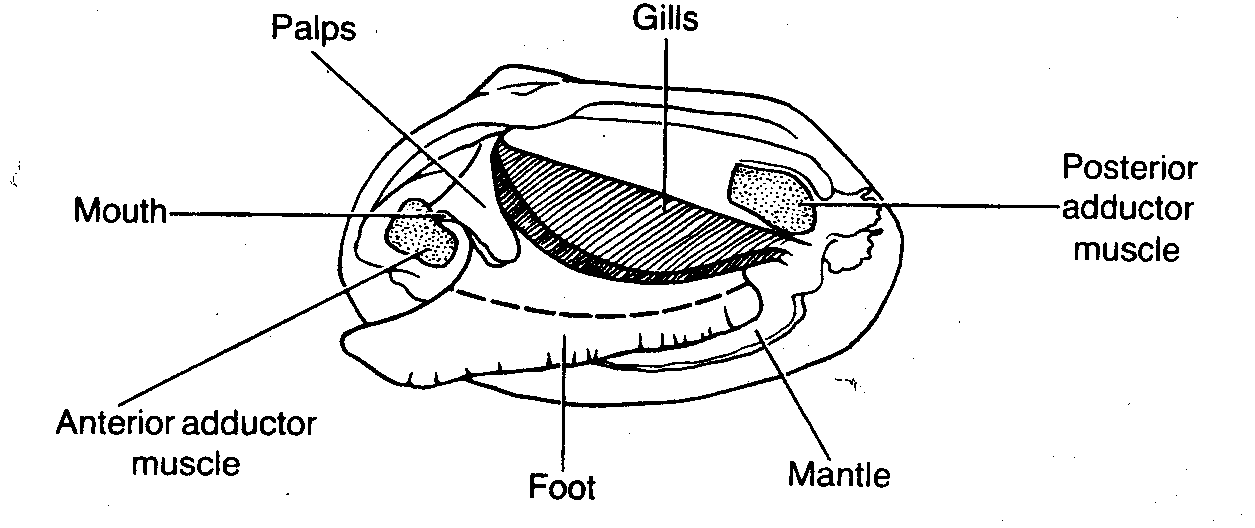

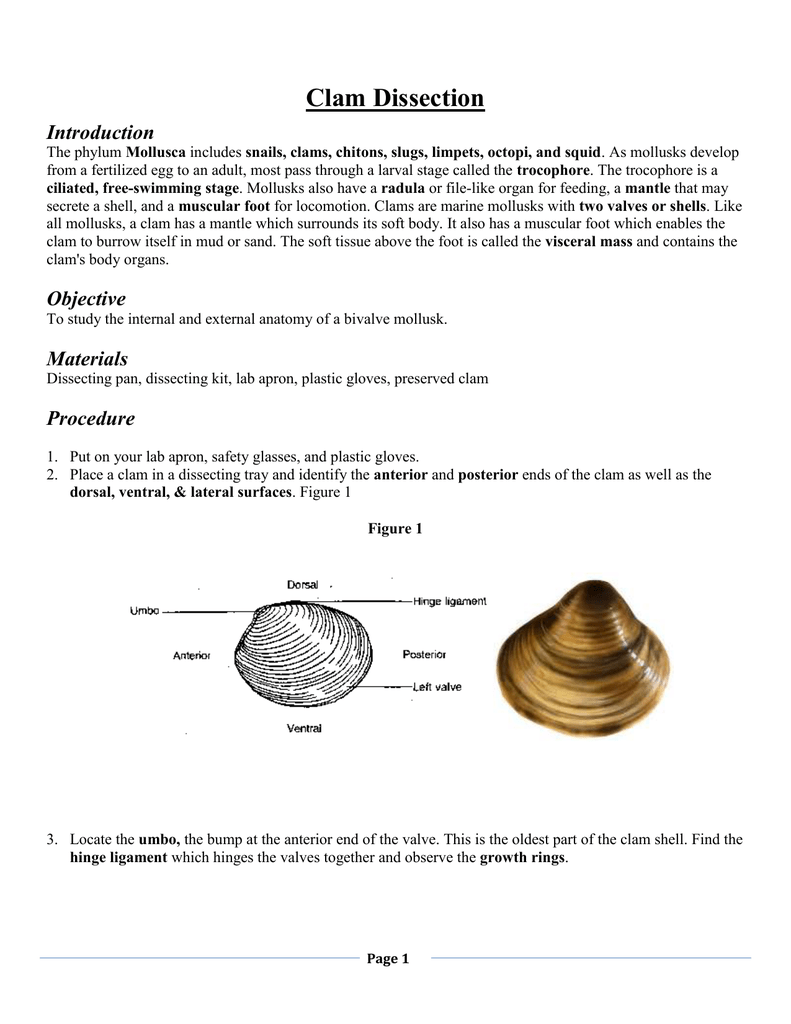
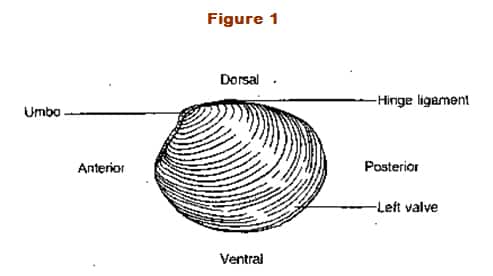

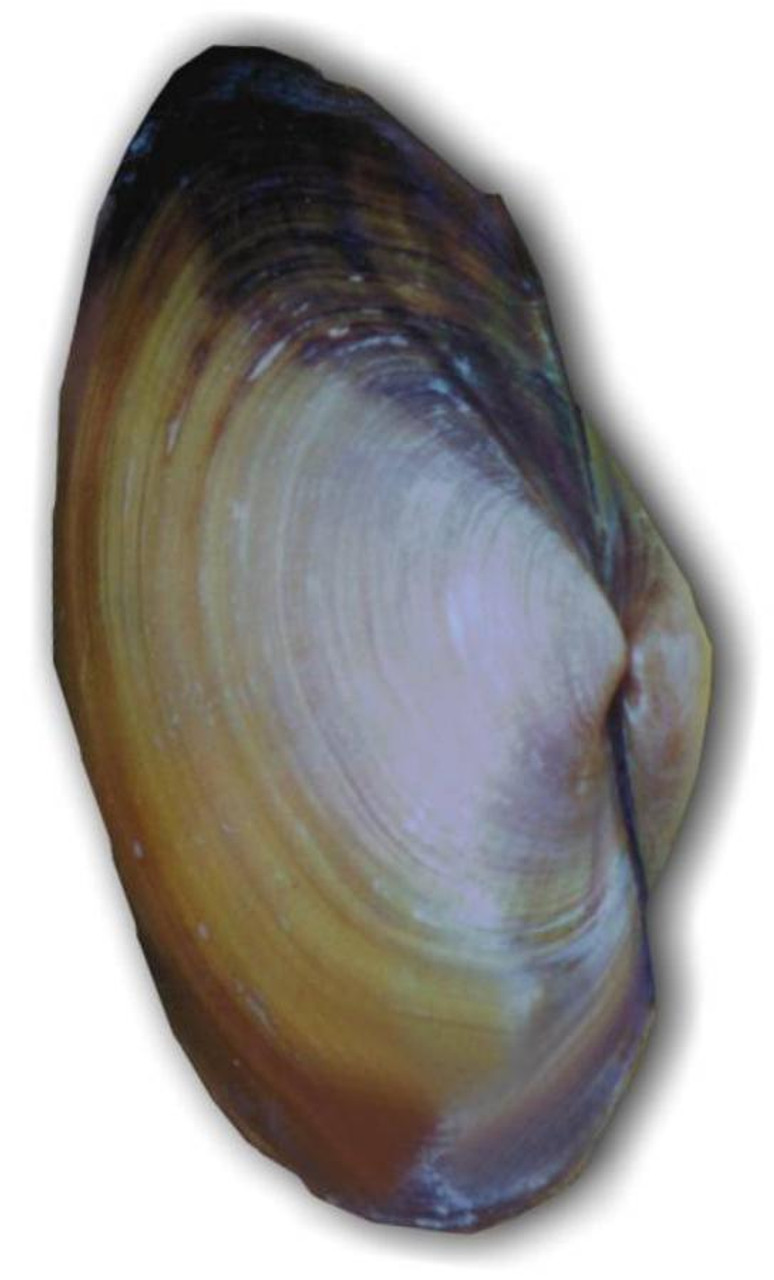

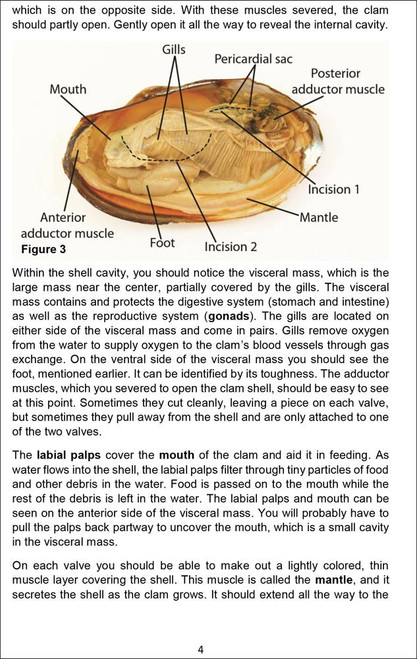


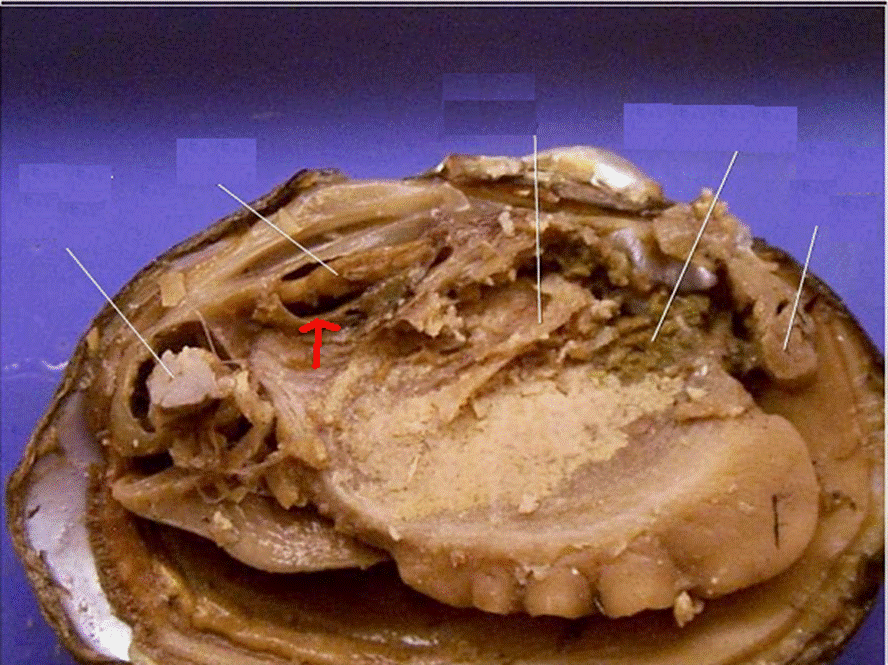

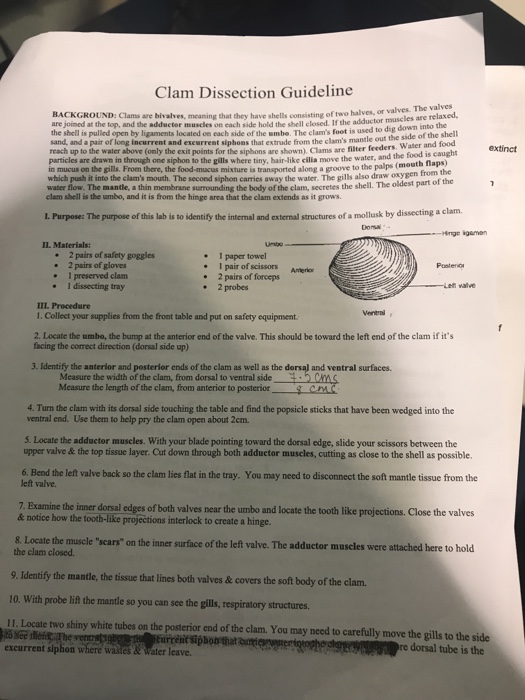
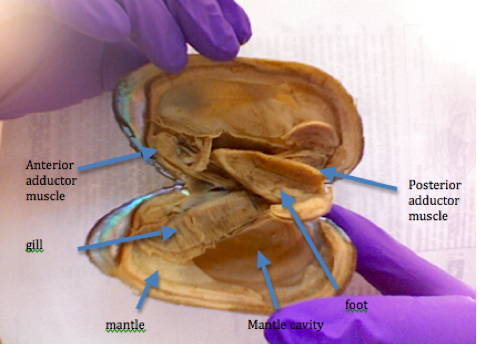
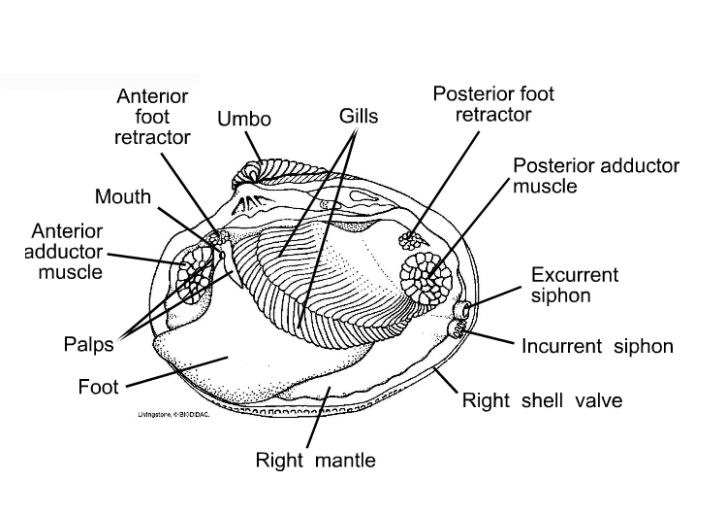


![Clam Dissection || Coming Out of Its Shell [EDU]](https://i.ytimg.com/vi/e8D8ZofvfNU/maxresdefault.jpg)
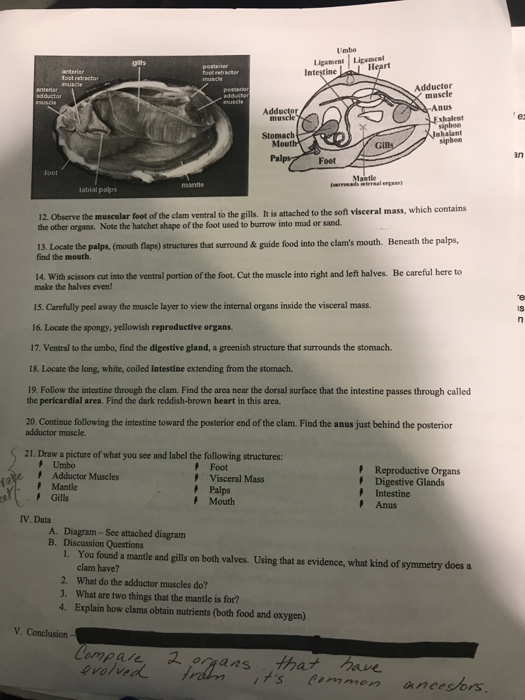






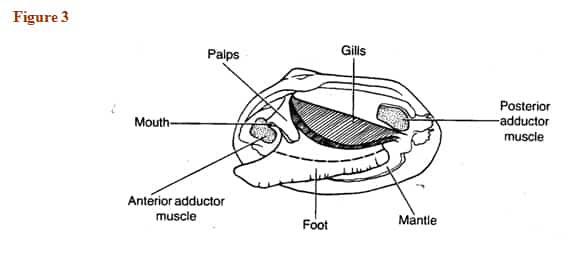





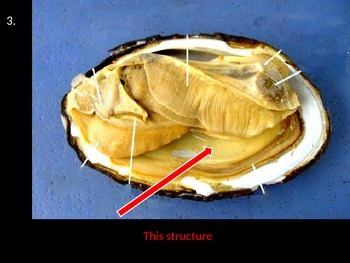
Comments
Post a Comment